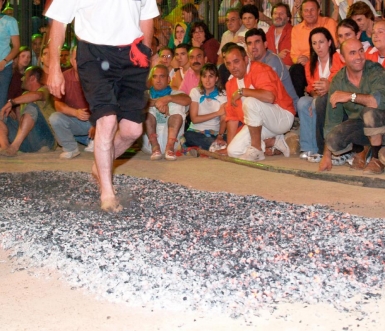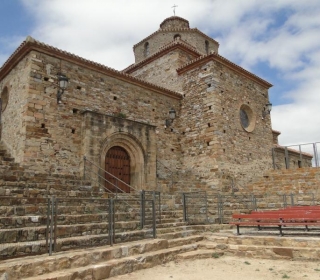Raza Duroc , posiblemente el mejor jamón serrano del mundo
Tierras Altas or La Sierra, as the region is popularly called by its inhabitants, is a region of the province of Soria (Castile and León, Spain), which is located in the north of the province and which, due to the harsh climate and the inhospitable nature of the place, represents a rugged but beautiful landscape from a tourist point of view. It belongs to the river basin of the Ebro River and has significant ironstone resources.
In the past, thanks to its summer pastures, it was an important centre of migratory livestock farming.
Its district capital is San Pedro Manrique.
The region almost completely borders the Cameros region, which lies almost completely within La Rioja (Montenegro de Cameros is part of the province of Soria) in the north and west, El Valle in the west, the Rioja region Arnedo in the northeast, Alhama-Linares (likewise in the province of La Rioja) in the east, Tierra de Ágreda in the southeast and the Campo de Gómara region in the south.
SAN PEDRO MANRIQUE
The village is 48 km from the city of Soria and its main access road is the N-111 to Garray, from where you take the C-115 to Oncala and from there continue on the main road for about 13 km.
San Pedro Manrique is an ensemble of popular mountain architecture. It was conquered by Navarre and repopulated by Navarre inhabitants in the eleventh century. It was the district capital of its Comunidad de Villa y Tierra. In 1464 he changed its old name from San Pedro de Yanguas to the present one when the Duke of Nájera added the surname of his family Manrique.
The village went through its most prosperous period during the heyday of the Mesta (an influential association of sheep farmers), when there were four districts, housing more than 4,000 people lived and when it gained connections with the international wool trade, especially through the Atlantic port of La Rochelle.
THE WALK THROUGH THE EMBERS AND `LAS MÓNDIDAS´ (SOLSTICE FESTIVAL)
On the night of 23 June, the Virgen de la Peña hermitage combines ritual and adrenaline. A thousand kilos of oak wood, carefully prepared into a path of embers, glow on the square. Before twelve o'clock, the audience in the tiers protects itself from the intense heat that the red carpet emits to participate in an ancient ritual performed towards the west, which the experts interpret as an initiation ritual or a means of achieving immortality through the purifying fire... Be that as it may, the Paso del Fuego, the walk over the embers, is one of the most exciting moments of the festival calendar beyond the provincial borders.
The inhabitants of San Pedro walk through the embers at midnight, on their own or carrying someone on their back, as they have done every year since time immemorial. It is said that they are the only ones who can accomplish this stunt (known as Pyrobacia), which has aroused the interest of curious onlookers, scientists and parapsychologists. All manner of hypotheses have been offered, one maintaining that the secret is to step hard so as not to leave any oxygen between the sole of the foot and the embers, thus avoid burning; another one stating that they hold their breath; and others explaining it away with references to concentration, a kind of ecstasy, faith, sweat, wine, blisters or air bubbles that get between the skin and the embers.
The fact is that the pasadores, especially the determination of the most experienced ones - led by the famous Chichorrillas - give the spectators goosebumps as they walk over the embers and hug each other afterwards. The ritual is chaired by Las Móndidas, three young inhabitants of San Pedro, who are chosen by draft from among the unmarried women of the village and who will be the protagonists of the following day’s events. It is said that these young women, wearing a white dress and carrying a strange basket with bread flowers and long flour sticks and saffron (arbujuelo) on their heads, are commemorating the abolition of the tribute of the 100 virgins after the Muslim defeat. But it is also said that they are simply the incarnation of the old Celtiberian priestesses........ These are just a few of the infinite theses put forward about an old and splendid festival on the highlands of the Tierras Altas.

